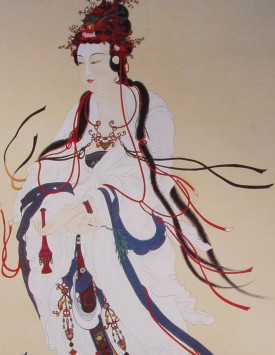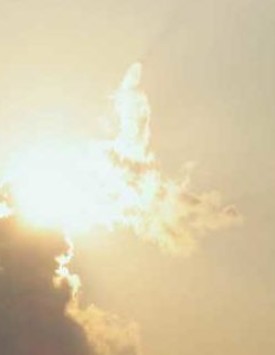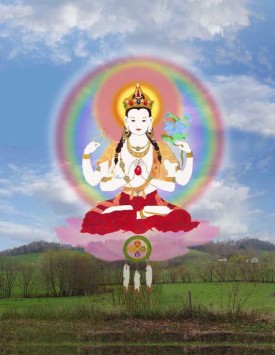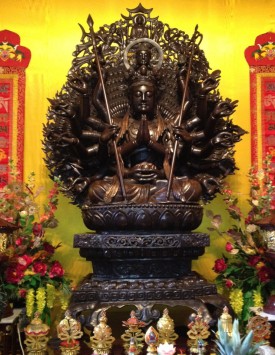Avalokiteshvara [Chinese: 觀世音菩薩 Guānshìyīn Púsà; Japanese: Kannon; Korean: 관음; Vietnamese: Quán Thế Âm; Tibetan: སྤྱན་རས་གཟིགས་ Chenrézik] is the bodhisattva of compassion, the listener of the world’s cries who uses skillful means to come to their aid; the most universally acknowledged bodhisattva in Mahayana Buddhism and appears unofficially in Theravada Buddhism in Cambodia under the name Lokeśvara. Avalokiteśvara is one of the Eight Great Bodhisattvas in Mahāyāna Buddhism, along with Mañjuśrī, Samantabhadra, Mahāsthāmaprāpta (Vajrapani), Akasagarbha, Kṣitigarbha, Maitreya and Sarvanivarana-Vishkambhin.
Avalokiteshvara Bodhisattva is a well-known great Bodhisattva. She had attained buddhahood countless eons ago and was known as Zheng Fa Ming (Correct Dharma Realization or True Dharma Brightness) Tathagata. Based upon her holy bodhicitta and vows of compassion, she manifests in this earthly realm as a bodhisattva to help liberate living beings from all sufferings. Many disciples of H. H. Dorje Chang Buddha III have reported seeing this Bodhisattva at various times. One disciple was able to capture a picture of Her standing on the clouds. John Blofeld, who was a professor of religion at the University of California at Berkeley and a Buddhist, tells of traveling with a Jesuit priest in Asia and meeting a shining apparition. The priest saw this other worldly being as Mary, the mother of Jesus, and John saw Avalokiteshvara. Although the Chinese refer to this Bodhisattva as Kuan Yin (Guan Yin) in the feminine and the Indians (Avalokiteshvara), Tibetans (Chenrezig) and others see him as more masculine in form, he/she is neither male nor female. This Bodhisattva appears in many forms, with two arms, four arms, 1,000 arms and other forms.
Kuan Yin’s birthday is celebrated each year on or near the 19th day of the second lunar month of the Chinese calendar.




